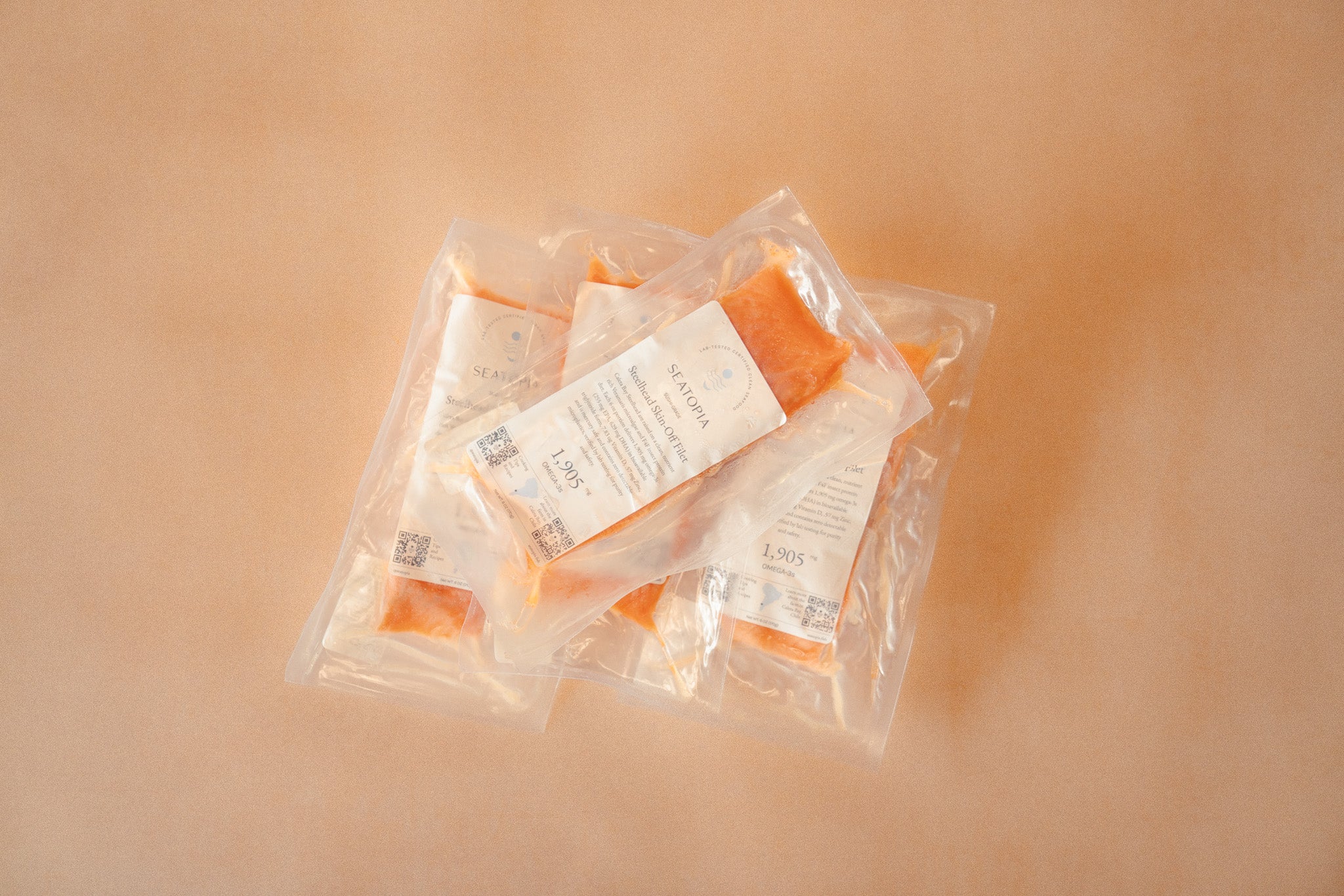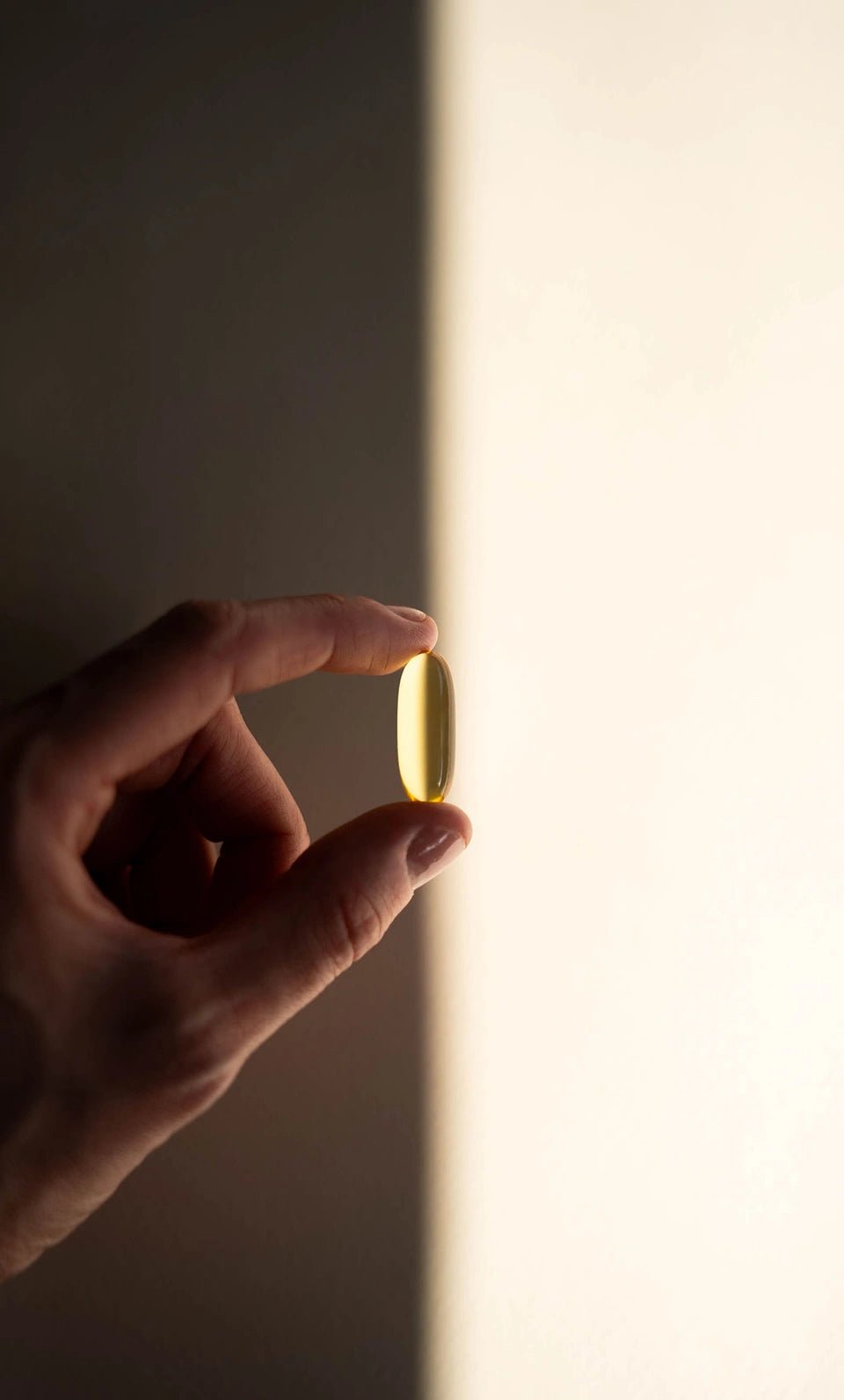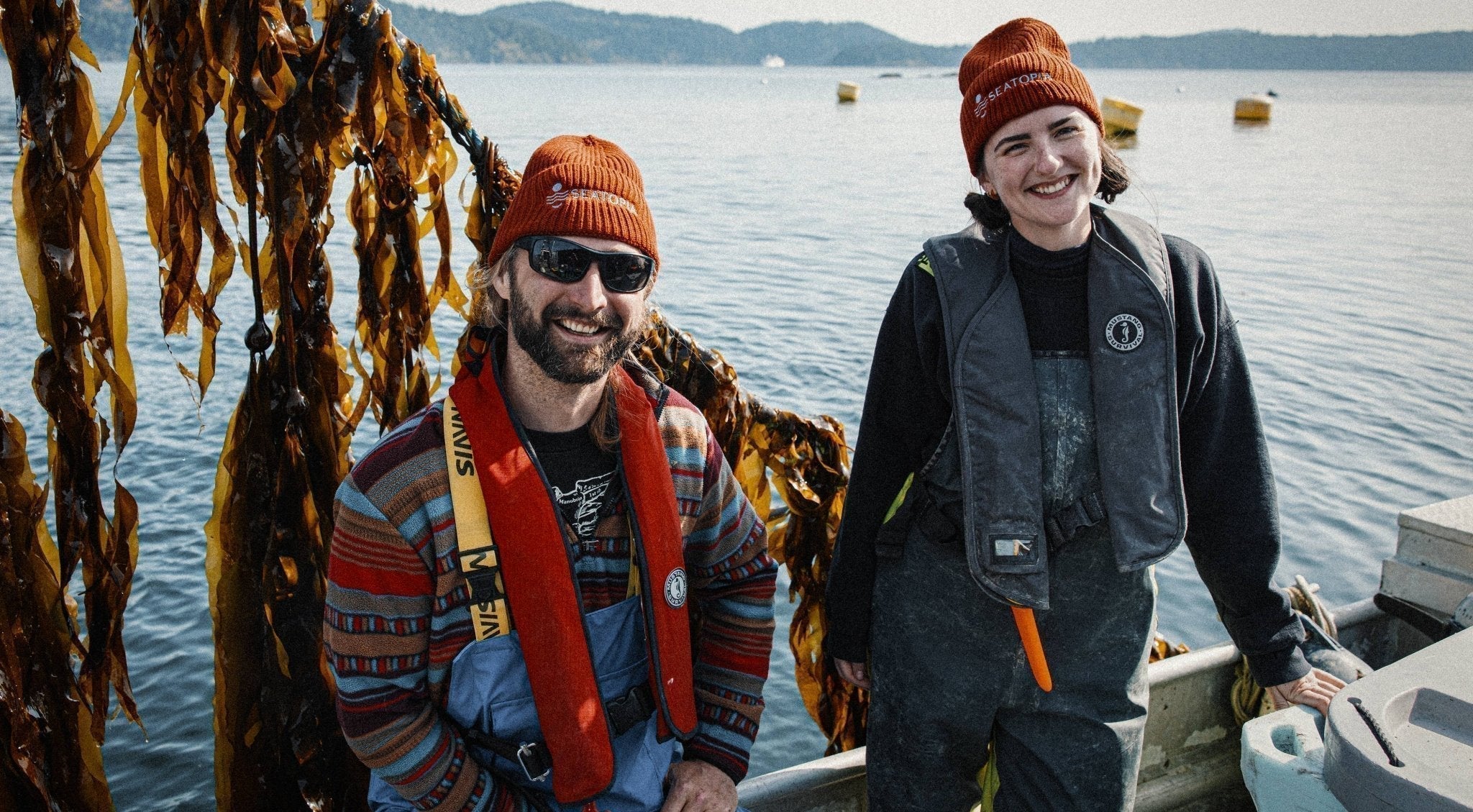Long before “superfoods” were a trend, seafood was humanity’s original nutrient intelligence system.
Our ancestors lived in intimate connection with the coast — gathering shellfish, crabs, seaweed, and small coastal fish from tidal pools and estuaries. These foods provided abundant selenium, iodine, and omega-3s, the essential marine minerals that powered our brain growth and metabolism.
Shellfish remain one of nature’s richest sources of selenium — often containing ten to a hundred times more selenium than mercury — and it’s likely that our antioxidant and detoxification systems evolved within this selenium-rich, low-mercury context.
By contrast, the modern industrial diet — and even modern seafood culture — has drifted far from those evolutionary foundations.
 Large pelagic predators like swordfish and big tuna are not the fish our ancestors ate daily. They require deep-sea hunting, large boats, and global cold chains — all modern inventions.
Large pelagic predators like swordfish and big tuna are not the fish our ancestors ate daily. They require deep-sea hunting, large boats, and global cold chains — all modern inventions.
These apex species accumulate mercury over long lifespans and often carry selenium-to-mercury ratios below 1, a reversal of the balance our biology was designed for.
At Seatopia, we’re restoring that original relationship between humans and the ocean — through seafood that’s nutritionally aligned with how we evolved to eat it: clean, low-trophic, selenium-protective, and regenerative.
For a deeper dive into the evolutionary story behind our oceanic origins and how marine nutrients shaped the human brain, see our companion piece: 👉 Are We Still Mermaids? — exploring the Aquatic Ape hypothesis and our biological bond with the sea.
When people hear “mercury in seafood,” they often imagine a binary: good fish vs. bad fish.
But the truth is more nuanced — and more fascinating.
Nature built her own balancing act into the ocean’s food web through selenium, a trace mineral that protects against mercury’s toxicity.
At Seatopia, we lab-test every product for mercury, microplastics, and the nutritional density of things like EPA and DHA. Now we’re also quantifying the selenium-to-mercury (Se:Hg) ratio — a little-known but powerful indicator of seafood safety and nutritional balance.
What is Selenium — and Why Does It Matter?
Selenium (Se) is an essential micronutrient found throughout the marine food web.
It’s part of key antioxidant enzymes called selenoproteins that protect our cells from oxidative stress and support thyroid, immune, and brain health.
In the ocean, selenium is homeostatic — meaning fish maintain it at relatively steady levels in their tissues, regardless of size or age.
Mercury, on the other hand, is bioaccumulative — it concentrates higher and higher up the food chain, especially in long-lived predators like swordfish or shark.
This difference — homeostatic selenium vs. bioaccumulative mercury — explains why some species pose a higher risk, and others (like Seatopia fish) naturally maintain a protective balance.
The Selenium:Mercury Ratio — A Better Measure of Safety
Scientists & nutritionists are beginning to look beyond absolute mercury levels to the Se:Hg molar ratio — comparing the number of selenium atoms to mercury atoms in a given portion of fish.
-
A ratio above 1 means there’s more selenium than mercury — selenium can “bind” and neutralize mercury’s reactive effects in the body.
-
A ratio below 1 suggests mercury could outcompete selenium, potentially interfering with critical selenoproteins.
Most commercial seafood falls comfortably above 1.
Seatopia’s lab-tested species — including steelhead trout, salmon, branzino, scallops, and shrimp — regularly exceed ratios of 10 to 50 : 1.
Why Some Fish Fail the Balance Test (and What the Data Show)
Not all seafood is created equal when it comes to mercury and selenium balance.
Certain large, long-lived species — especially tuna and swordfish — accumulate mercury at rates far faster than their selenium levels can rise.
Tuna: The Trophic Trade-Off
Across commercial tuna species, mercury levels vary widely by species and size:
-
Skipjack (Katsuwonus pelamis) — the smallest and fastest-growing tuna — averages 0.10–0.20 ppm mercury, with selenium around 0.5–0.9 ppm, yielding a Se:Hg molar ratio of 4–8:1 (protective).
-
Albacore (Thunnus alalunga) — popular in canned “white tuna” — averages 0.35–0.45 ppm mercury, selenium near 0.6–0.8 ppm, ratio roughly 2–3:1.
-
Yellowfin (Thunnus albacares) — often used in sushi and poke — carries 0.4–0.6 ppm mercury and 0.7 ppm selenium, ratio around 1.5–2:1, still marginally protective.
-
Bigeye (Thunnus obesus) and Bluefin (Thunnus thynnus) — the largest and most predatory tunas — average 1.0–1.8 ppm mercury but only 0.7–0.9 ppm selenium, producing ratios <1, which indicates a tipping point where mercury can overwhelm selenium’s protective binding capacity.
Larger, older tunas (>40 kg) almost always show Se:Hg ratios below 1. That’s why agencies like the FDA and EFSA recommend limiting consumption of bigeye, bluefin, and albacore for pregnant women and young children, while skipjack remains broadly considered safe.
Swordfish: The Apex Outlier
Swordfish (Xiphias gladius) represent the extreme case of bioaccumulation.
Average U.S. market samples test around 0.95–1.4 ppm mercury, with selenium roughly 0.6–0.8 ppm, yielding Se:Hg molar ratios of 0.3–0.8:1 — meaning mercury exceeds selenium on a molar basis.
In larger specimens (>100 lbs), mercury can exceed 2 ppm, with no corresponding rise in selenium. These sub-1 ratios explain why swordfish consistently top “avoid” lists for expectant mothers and why they’re excluded from Seatopia’s sourcing framework.
In contrast, Seatopia’s salmonids, bream, and shrimp typically contain 0.01–0.05 ppm mercury and 0.2–0.6 ppm selenium, translating to Se:Hg ratios from 10 up to 50:1 — an order of magnitude more protective than even small tuna.
(Data compiled from NOAA, EFSA, and peer-reviewed studies including Burger et al., Environmental Research, 2014; Ralston & Raymond, Biochim. Biophys. Acta, 2010.)
Seatopia Fish: Naturally in Balance
Seatopia’s regenerative aquaculture partners raise fish on clean, fish-free feeds rich in microalgae and insect protein — ingredients that provide natural selenium in organic forms (like selenomethionine) without introducing mercury.
These diets mirror the protective balance found in wild planktonic food webs but without the contaminants.
As a result:
-
Mercury levels remain well below 0.1 ppm (our Mercury-Safe Standard).
-
Selenium remains stable around 0.2–0.6 ppm, yielding Se:Hg ratios far above 1.
Can You Have Too Much Selenium?
It’s an important question — and the short answer is not from seafood.
Selenium is an essential trace mineral — our bodies need it in small amounts to support antioxidant defense, thyroid function, and immune health. Like many nutrients, balance matters. Extremely high doses (typically from supplements, not food) can lead to a rare condition called selenosis, marked by fatigue, nail brittleness, or hair loss.
The recommended daily intake for adults is about 55 micrograms, and the upper safe limit is 400 micrograms per day.
Seatopia fish naturally contain 0.2–0.6 parts per million of selenium, which translates to roughly 40–120 micrograms per 100g serving — perfectly within the beneficial range.
Even when eaten regularly, Seatopia seafood delivers optimal, not excessive, selenium levels — maintaining the protective balance nature intended, without ever approaching toxicity.
In other words: enough to protect, never to harm.
The Bigger Picture: Nutritional Ecology
The Se:Hg ratio isn’t just a safety metric — it’s a window into ecosystem health.
It reflects the ocean’s natural nutrient hierarchy: plankton and algae concentrating essential minerals; small fish passing them along; large predators magnifying toxins.
By sourcing from low-trophic, microalgae-fed, regenerative aquaculture, Seatopia restores this balance — producing seafood that’s not only safe but nutrient-intelligent.
The Takeaway
When choosing seafood, look beyond simple “mercury content.”
Ask whether the fish’s selenium is in molar excess to mercury — and whether its feed and environment support that balance.
At Seatopia, we’re proud that every fillet, scallop, and shrimp we test reflects this harmony:
clean, regenerative, selenium-protective seafood for people and planet.
Values based on independent COAs; results vary naturally by species and lot. These statements have not been evaluated by the FDA and are provided for educational purposes only.
References & Further Reading
-
For a deeper dive into the evolutionary story behind our oceanic origins and how marine nutrients shaped the human brain, see our companion piece: 👉 Are We Still Mermaids? — exploring the Aquatic Ape hypothesis and our biological bond with the sea.
-
Ralston, N.V.C. & Raymond, L.J. “Selenium health benefit values as seafood safety criteria.” Biochim. Biophys. Acta, 2010.
-
Burger, J. et al. “Mercury and selenium levels in 19 species of saltwater fish from the Atlantic and Gulf of Mexico.” Environmental Research, 2014.
-
EFSA Panel on Contaminants. “Dietary selenium requirements for salmonids.” EFSA Journal, 2018.
-
Norwegian Food Safety Authority. “Monitoring of mercury and selenium in farmed salmon 2023.”










Share:
The Surprising Truth About Seafood Packaging (and Why Ours Matters)